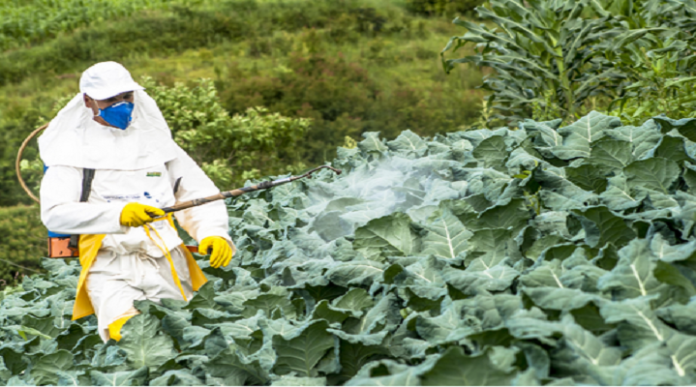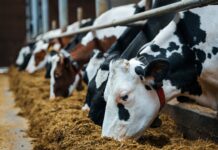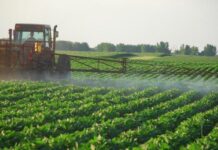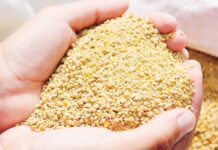BlueWeave Consulting, a leading strategic consulting and market research firm, in its recent study, estimated global crop protection chemicals market at USD 64.52 billion in 2021. During the forecast period between 2022 and 2028, the size of global crop protection chemicals market is projected to grow at a CAGR of 4.4%, to reach a value of USD 87.12 billion by 2028. The key growth driver is a greater emphasis on high crop output to combat food security. In terms of regulatory interventions for safe farming and overall farming culture and practices, the agriculture sector has made remarkable progress worldwide. Growing food demand has prompted agrochemical-based institutions to improve their products and transition to greener alternatives through research investments. Companies in the industry have been commercializing bio-based chemicals derived from plants, minerals, bacteria, and animals. Biopesticides are one such area where the industry has made significant strides. Over 1,500 biopesticides have been registered, with over 300 active ingredients thought to have pesticide properties. However, the issues related to pesticide residue could restrict the market expansion.
Regulatory intervention fuels market growth
Global crop protection chemicals market is impacted by regulatory intervention in the form of new laws and standards. In this sense, manufacturers must adapt to the introduction of new regulations by either investing in the development of novel products (in the case of regulations about product specifications or the use of raw materials) or by adjusting their operational flow (specifically in the case of regulations about manufacturing processes) or by making efforts (either financial or human resource) to comply with such regulatory revisions. In retrospect, these regulatory changes have a significant effect on the viability and size of economies connected with the production of crop protection chemicals. As a result, global crop protection chemicals market is projected to grow at a significant rate during the forecast period (2022–2028).
Request for Sample Report @ https://www.blueweaveconsulting.com/report/crop-protection-chemicals-market/report-sample
Shrinking size of arable land across the world
With rising urbanization rates and more people residing in cities than in the countryside, the size of arable land is also declining. In the coming years, crop protection chemicals are anticipated to have a significant impact on raising agricultural productivity. These substances should increase agricultural yield by getting rid of pests that lower yields, giving farmers more crops per acre, and reducing the need to convert natural areas like forests, prairies, wetlands, and other habitats for wildlife into farmland. This would provide lucrative opportunities for global crop protection chemicals market during the forecast period (2022–2028).
Environmental effects leading to modifications of regulatory practices
With the advancement of biotechnology and microbiology, one of the major challenges confronting the crop protection chemicals market is the development of genetically modified (GM) crops. Gene modification can be used to create new GM seeds that have the natural ability to repel pests. In recent years, the development of genetically modified crops, particularly for pest resistance, has resulted in a lower need for traditional crop protection chemicals.
Segmental Coverage
Global Crop Protection Chemicals Market – By Form
Based on the form, global crop protection market is segmented into Dry and Liquid. The liquid segment now has a larger market share and could continue to do so during the forecast period (2022–2028). This is due to the rising demand for these products, particularly in the foliar spray and seed treatment modes of application. The demand for them is increased by the fact that they are also less expensive than solid formulations and can be combined with any other crop enhancer or crop protection product. Suspensions (flowable solutions), solutions, emulsifiable concentrates, microencapsulated suspensions, and aerosols are all examples of liquid pesticides. Both suppliers and end users prefer crop protection chemical products in liquid form.
Impact of COVID-19 on Global Crop Protection Chemicals Market
The COVID-19 pandemic shook several markets worldwide, including crop protection chemicals. The pandemic disrupted supply chain networks, costing businesses and farmers money. A short-term shortage of migrant laborers, combined with distribution bottlenecks, resulted in a large disparity in the number of workers required for pesticide production. The COVID-19 pandemic, on the other hand, has had a short-term impact on market growth but is expected to increase investment, particularly in biologics, as part of a broader shift toward food security and sustainable crop production, as well as ensuring a more robust supply chain. The crop protection chemical industry has been transforming over the years due to robust growth, changing crop mix trends, and environmental regulations.
Competitive Landscape
Prominent market players in global crop protection market include BASF SE, The Dow Chemical Company, Dupont, Sumitomo Chemical Co., Ltd, Syngenta AG, Bayer Cropscience AG, Sinochem Holdings, FMC Corporation, NufarmLimited, Adama Agricultural Solutions Ltd., Verdesian LIfescineces, Bioworks Inc., Valent US, Arysta Lifescience Corporation, America Vanguard Corporation, Chr. Hansen, Corteva Agriscience, UPL Limited, Jiangsu Yangnong Chemical Group Co Ltd, Agrolac, Lianyungang Liben Crop Science Co. Ltd., Nanjing red sun co. ltd, Kumiai Chemicals., Wynca Chemical, Lier Chemicals, and Simpcam Oxon.
Global crop protection market is highly fragmented with the presence of several manufacturing companies in the country. The market leaders retain their supremacy by spending on research and development, incorporating innovative technology into their goods, and releasing upgraded items for customers. These companies employ various strategies, including strategic alliances, agreements, mergers, and partnerships.
Contact Us:
BlueWeave Research Blog
Phone No: +1 866 658 6826
Email: info@blueweaveconsulting.com














